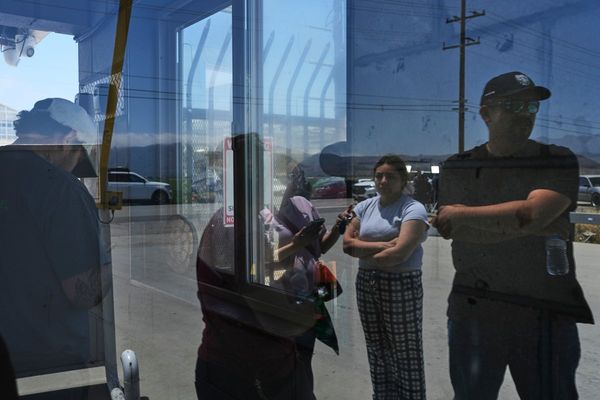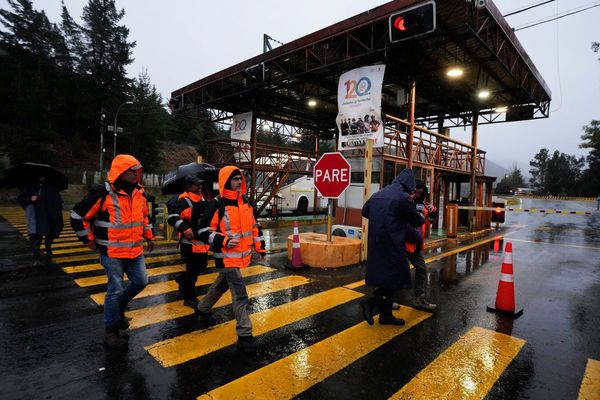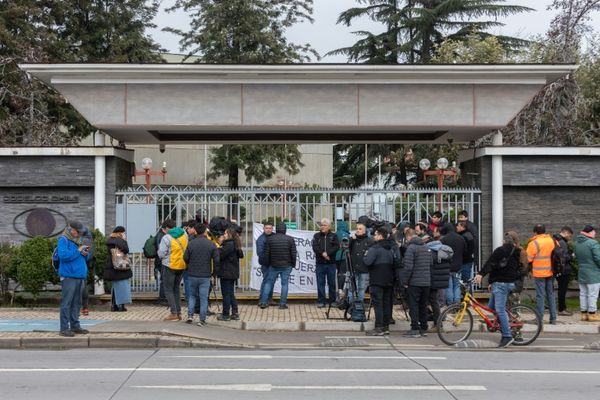
NIKAHO, Akita -- I went out to the seashore in Nikaho, Akita Prefecture, tempted by a suggestion from the manager of the inn where I was staying.
"If you want to go to a michi-no-eki," he said, referring to a roadside rest area where local specialty items are sold, "It's better to take a road along the coast." When I arrived at the seashore, a light wind was blowing.
Prior to my visit to Nikaho, the temperature in mid-August had hit 38 C. The prefecture was in the grip of a heat wave.

The sea breeze softened my anxiety a little.
Kisakata is a place that had drawn the likes of many literary figures, including haiku masters Matsuo Basho and Yosa Buson. I visited the Nemunooka observation tower at the michi-no-eki building, and had a view of an area that used to be an inlet with numerous islands. The area is referred to as "Kujukushima," literally meaning 99 islands -- even though the area is dry land today.
At the foot of Mt. Chokai, which rises 2,236 meters above sea level, a carpet of golden rice paddies was dotted with thick stands of black pine.

The area's topography was formed about 2,500 years ago when part of the mountain collapsed. Small hills created by rock avalanches became islands in a lagoon, and Kisakata became a scenic spot comparable to Matsushima in Miyagi Prefecture. However, an earthquake in 1804 raised the ground by more than two meters, merging Kisakata's islands with the surrounding land.
The Sea of Japan extends from the other side of the observation tower. The sunset painted the horizon red. There is a hot spring bath in the michi-no-eki building. Soaking in moderately hot water, I watched as the sky and the sea shaded into darkness.
One of Kisakata's specialties is the summer rock oyster, which is said to grow in the riverbed water rich in minerals flowing down from Mt. Chokai.

This year marks 330 years since Basho's departure on the "Oku no Hosomichi" (Narrow Road to the Deep North), which became the title of his most famous work, a travelogue filled with poems. The Kisakata Kyodo Shiryokan folk museum has held a special exhibition that introduces the scenery of Kisakata that Basho saw, and how the place influenced later intellectuals.
Basho visited Kisakata 115 years before the quake, staying three days in the summer, and composed three haiku poems.
In the travelogue he published later, he included two haiku about Kisakata after revising them.

Basho wrote, "Kisakata ya / Ame ni Seishi ga / Nebu no hana" (At Kisakata / like Seishi is asleep in the rain / silk flowers blossom).
In the haiku, Basho sees Seishi, a legendary Chinese beauty, in the flowers wet in the rain.
Another haiku he wrote is, "Shiokoshi ya / Tsuru hagi nurete / Umi suzushi" (In shallows / crane wets its legs / sea cool). In the haiku, Basho portrayed how the sea looked cool as a crane wet its legs in shallow waters.
The museum has a tanzaku card on which Basho wrote an earlier version of this poem: "Koshitake ya / Tsuru hagi nurete / Umi suzushi." Koshitake, meaning "waist-high," was later replaced by "in the shallows."
Noin Island was the first place Basho visited by boat in his journey around the islands.
"The scenery with Mt. Chokai in the background is picturesque. You can go to the island almost straight from here," said the museum's director, Kazuhiko Konno, 50, pointing to the map.
After visiting Noin Island, which looks like a tall mound, I went to Kanman-ji temple. The temple, called "Kanmanju-ji" in "Oku no Hosomichi," has guest books for travelers in which there are inscriptions by haiku master Kobayashi Issa, inventor Hiraga Gennai and author Ryotaro Shiba.
The temple's chief priest, Yunin Kumagai, 55, took several notebooks out of a wooden box and turned some pages, saying, "These are not things just to be stored away."
I was surprised when I found the signature of former Taiwan President Lee Teng-hui in one of the books. The temple also keeps a kaishi paper on which Basho wrote haiku.
There is a stone to moor a boat on the temple grounds, conveying the atmosphere of the time when it was one of the former islands.
I went around Benten and Nara islands by walking a path between paddy fields. "I recommend that you visit Kisakata in the season when the rice fields are filled with water. Even a local like me feels good to be here then," said a 77-year-old man who was farming nearby. The rice harvest is expected to start early this year.
Pizza portrays lovely landscape
"Mt. Chokai pizza" is an original dish of Kisakata Pizza, a handmade pizza restaurant. One part of the crust is folded over to create a risen calzone, which is likened to Mt. Chokai, while the flat remaining portion of the crust is tomato sauce-based margherita pizza, likened to Kujukushima. The scenery of Kisakata is thus reproduced in a pizza. The calzone has a rich taste with seasonal vegetables such as eggplant layered with cheeses such as mozzarella and ricotta. The pizza dough is crispy on the outside and fluffy inside. Dai Kosaka, 49, manager of the restaurant, trained at an Italian restaurant in Tokyo, and opened the restaurant in the Nikahotto tourist center adjacent to a michi-no-eki rest area. "Both vegetables and fish are delicious in Kisakata. The pizza brings out the flavor of the ingredients," he said. One pizza costs 1,000 yen.
Sweets using figs
Kisakata is rich in sweets using figs in jams, pies and kanroni (figs boiled with sugar). Figs grown in the Otake district in Nikaho, near Kisakata, are called "the northernmost figs." Figs candied with mountain grapes are made by adding agar to a sweet-sour syrup blended with wild grape juice. The candied figs are wrapped in easy-to-eat packages. One piece costs 250 yen. A package with eight pieces is 1,890 yen. It was developed by Sato Kanroku Shoten, a company that processes figs and sells local sake.
Access
It takes about 2 hours and 10 minutes from Tokyo Station to Niigata Station by Joetsu Shinkansen. Transfer to the JR Uetsu Line limited express and ride about 2 hours and 40 minutes to Kisakata Station. From Haneda Airport, you can fly to Shonai Airport or Akita Airport and take the Uetsu Line from there.
For more information, call the Nikaho City Tourist Association at (0184) 43-6608.
Read more from The Japan News at https://japannews.yomiuri.co.jp/







